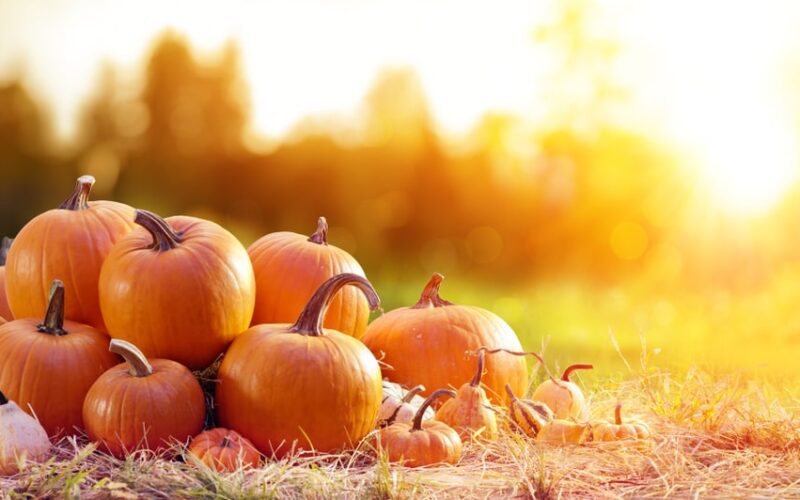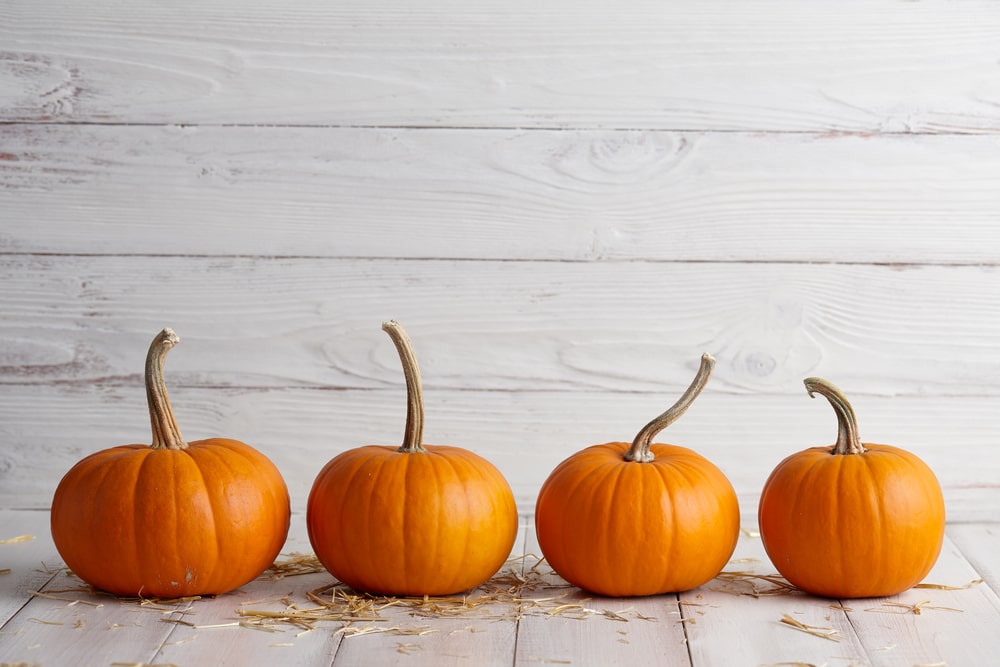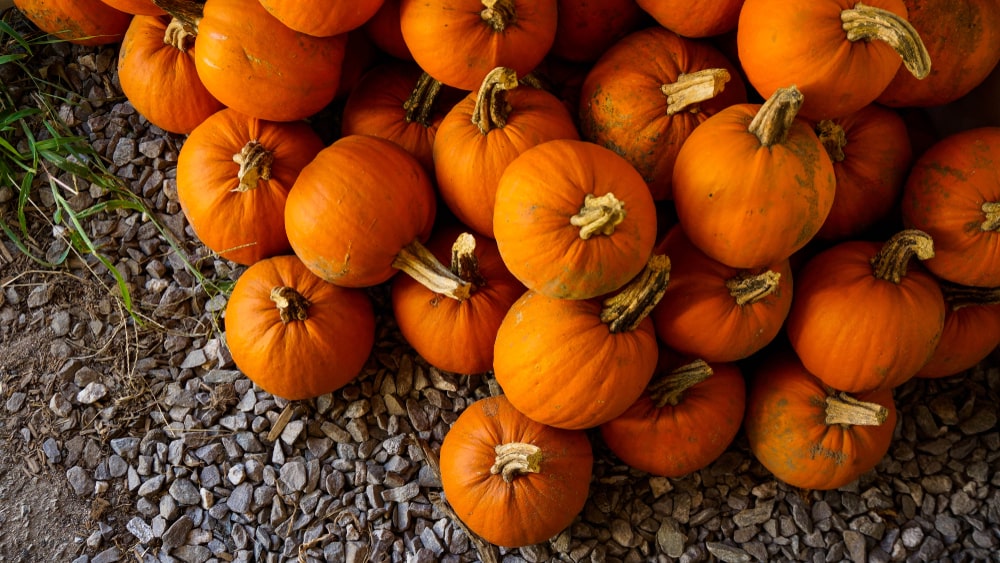How To Grow Pumpkins and Care for Them at Home

Though it may be a bit too early to start putting up your fall and Halloween decorations, it’s certainly never too early to start planning how to grow your own pumpkin patch.
It may seem like a daunting task at first, but learning how to grow pumpkins at home isn’t as difficult as other gardeners may suggest it to be. Read this blog to find out how to plant and care for your own pumpkins, the different varieties to choose from, and how to harvest them.
Skip Ahead:
Preparing For Planting Pumpkins
How to Care for Pumpkin Plants
Benefits of Growing Pumpkins
If you are unsure about whether or not the process of growing pumpkins at home will be worth the effort, there have been many benefits that come from adding these orange vegetables to your garden.
Their benefits include:
- Being good soil coverage, as their leaves block the sun/prevent weeds from growing.
- Producing pumpkin seeds, which are very popular and sell relatively well as a snack.
- Being full of nutrients and very healthy to eat, as they are low in calories, free of fats, cholesterol, and sodium while high in vitamins.
- Having a large variety of recipes that they can be used for, especially when paired with fall dinner meals.
Though these winter squash will require a good amount of attention and nourishment, they are relatively easy to care for. And part of the fun comes from not just eating them, but deciding which kind you’ll choose to grow in your garden!
Pumpkin Varieties
There are many different types of pumpkins to choose from when deciding what to plant, so it’s important to do research on which ones are best for your patch. It’s especially important to take into account factors such as size and growth rate.
Here is a list of a few common pumpkin varieties you may want to consider when planning what sort of pumpkin patch you want.
- Jack-be-Littles
- Baby Boo
- Fairytale Pumpkins
- Baby Bear
- Autumn Gold Pumpkins
- Dickinson Pumpkin
- Long Island Cheese
- Cinderella
- Howden’s Field
- Atlantic Giant

Preparing for Planting Pumpkins
When you’re growing pumpkins at home, there are a few things you should keep in mind when preparing your spot for your pumpkins.
Most importantly, always do research on the specific pumpkin you’re growing, but here are some general facts and information you should keep in mind when prepping your planting area.
Soil
Make sure that your garden plot has the best soil for pumpkins. Ideally, it should be rich, loamy soil that is sufficiently moist to retain as much water as possible.
We recommend mixing organic matter into the soil, especially material high in nitrogen as pumpkins crave that most when growing.
Also, be aware of the pumpkin soil pH, as it should be around 5.5-6.5 for healthy growth.
Sun
Pumpkin sun requirements ask that this winter squash be given full sun, with a little shade (but not enough that it will be hidden from the sun). This is because their seeds don’t do well in freezing soil or when there’s still frost outside, so it’s best to wait for warm weather.
Seeds
In regards to pumpkin seeds, they will need ample time to germinate and grow in warm soil. If your aim is to harvest in mid-late October, start planting them in late May/early June.
If you live in the south, it’s best to wait until late July due to excessive heat which can lead to early softening and rot.
Do research on what your specific pumpkin type will need and if you need to do anything additional to aid in their growth. Even if they are all the same type of vegetable, different pumpkins will need different levels of attention/care.
How to Plant Pumpkin Seeds
- Plan to give pumpkins around 4-6 or 7 feet of space each. This is typically recommended for the smaller variety of pumpkins, so for medium-sized pumpkins aim for around 7-10 feet, and larger pumpkins around 30 feet.
- Consider using hill planting, which can be especially helpful in keeping the soil warm, promoting good drainage, and protecting against pests.
- Keep your rows around 10-15 feet apart to give pumpkins ample space to take root and grow.
- Be sure to constantly keep the area weed-free, but remain cautious about using insecticides so you don’t drive important pollinators like bees away.
- Plant your seeds 1-2 inches deep in the soil, and (depending on the variety) aim for around 2-5 seeds per hole.
- When they start to sprout big leaves, try to have no more than 2-3 plants per section. If you’d like, you can plant them indoors in small potting, but transplant once full leaves start sprouting (which usually happens around the second-week mark).
How to Care for Pumpkin Plants
Now that the pumpkins have been planted, they should be monitored and carefully nurtured as they grow. Here are some important components to keep in mind as you tend to them.
Water
When looking at how much water pumpkins need, it’s actually important that they stay very hydrated. This is because a large percentage of the vegetable (around 90% of it) is made up of water.
They shouldn’t be watered every day, but at least 2 or 3 days a week (while adjusting to account for variety/weather if needed). Aim to water early in the morning (while it is still cool outside) and provide about an inch of water.
Fertilizer
Pumpkin fertilizing is especially important when the vegetable starts producing huge leaves (which will start covering ground weeds).
Use organic mulches and fertilizers high in nitrogen, since (as mentioned earlier) pumpkins love nitrogen and it helps them to grow bigger.
Pests
As you encourage pollinators to visit your pumpkin patch, keep an eye out for pumpkin pests and diseases that will want to eat/damage all of your hard work
Pests to look out for:
Diseases to look out for:
- Powdery mildew (This is the biggest concern for pumpkins and requires the most attention)
- Leaf spot
- Bacterial leaf spot

When to Harvest Pumpkins
Once fall has arrived, it’s time to begin harvesting your pumpkin plants. Make sure to harvest them before the frost season sets in (usually late September/early October).
You’ll know that your pumpkin is ready if you find that the fruit has fully formed, is a deep color of whatever it naturally is (usually orange), and has a hard rind. You can also tell by how firm and heavy the vegetable is, with no major deformities or signs of disease.
Harvesting and Storing Pumpkins
Using a sharp tool (such as a heavy pair of shears or a knife), cut the major vines connected to the pumpkin. Before making the cut, be sure to leave around 3-4 inches of stem attached.
Always be sure to wash your pumpkin if you plan on having it indoors or prepared to eat. That way, you remove all of the soil/dirt stuck to it as well as kill any bacteria on it.
As for storing recommendations, it’s best to store pumpkins in a refrigerator or freezer to prolong how good they will be. We highly recommend somewhere that is cool and dry, and to not keep the pumpkin stored longer than a month.
Haven’t had time to grow a pumpkin patch this year? Check out our selection of freshly-grown, and ready to bring home pumpkins! See what’s available at our Home & Garden Centers today.
